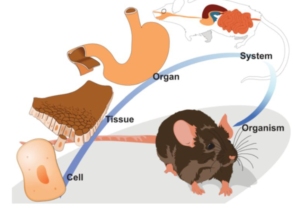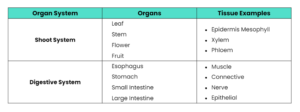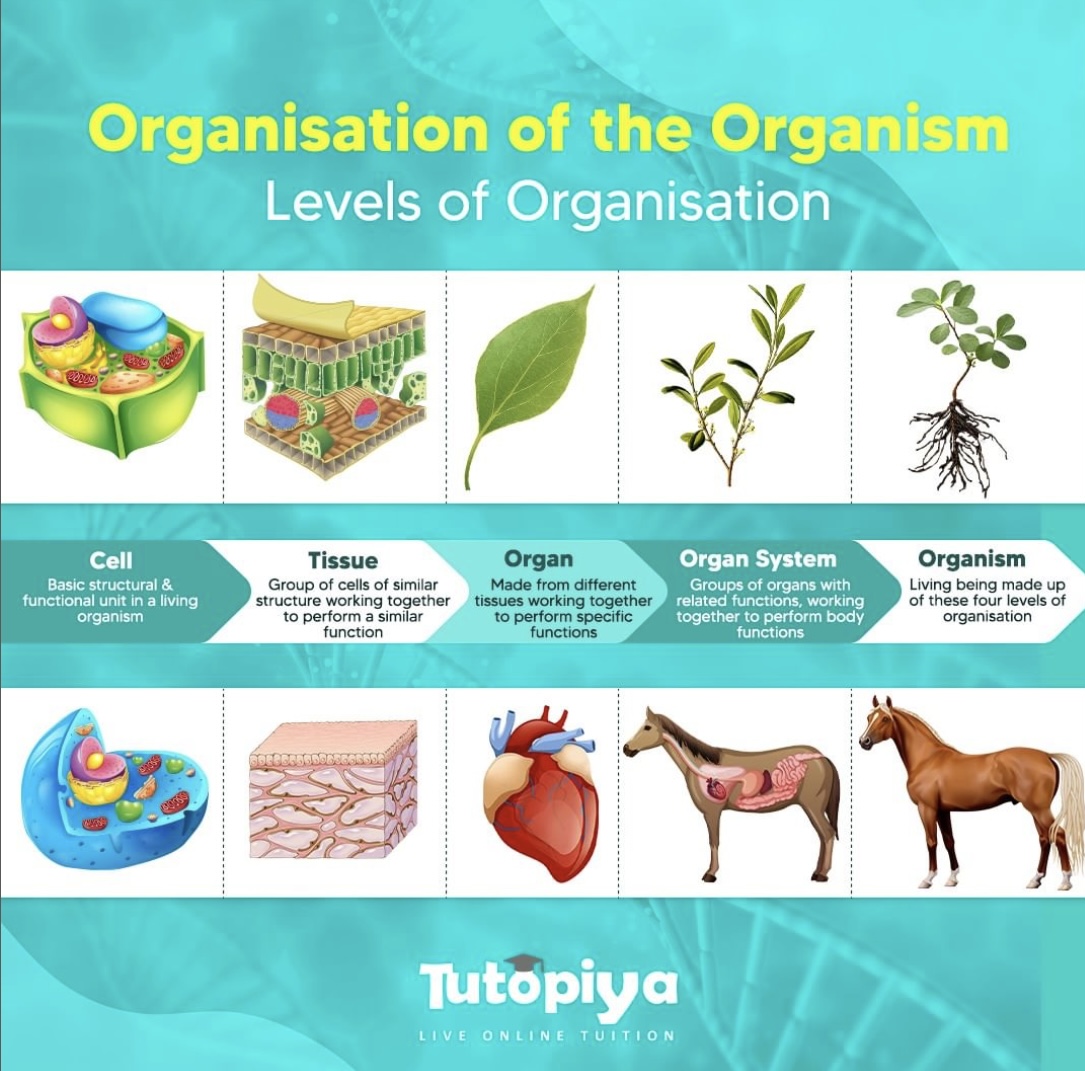[Please watch the video attached at the end of this blog for a visual explanation of Discovering the Complexity: Exploring the Levels of Organization within Organisms]
We have learnt about multicellular organisms, and some examples that come to mind when we think of such organisms would be human beings, a dog, or trees. All such multicellular organisms are complex organisms, and by complex it means they are made up of many many cells, different tissues, different organs, etc.
If we study the structure within a multicellular organism, there are a few levels of organisation that can be found, and that is what will be discussed in this article.
Cells
This is the basic structural and functional unit of an organism. It is the building block of a living organism. It is also the simplest part of a multicellular organism. Multicellular organisms such as human beings probably have millions of cells in our body, and one tiny little cell in our body is the basic unit of our life. Many of these cells are what build up a living organism, so that is why we consider the cell to be the first level of organisation within a multicellular organism.
Tissues
Tissues are formed when many different cells with similar structures and functions work together as a group. This is the second level of organisation in a multicellular organism.
To understand cells and tissues better, we can consider a few examples. If we consider cells, we have learnt about specialised animal cells and specialised plant cells. We have learnt of the epithelial cells found in animals and with regard to plants, we have learnt of cells such as the xylem vessels. One individual cell such as an epithelial cell or a xylem cell is what we call a singular cell.
Sometimes these epithelial cells group up together, and in that case, it would become a tissue; the epithelial tissue. With regard to plants, many xylem vessels group up on top of the other (that is in fact always the case) and this would be called the xylem tissue.
Organs
The third level of organisation in multicellular organisms is the organ.
An organ is a structure that is made up of different tissues. These different tissues work together to perform a specific function.
Examples of organs found in animals are the heart, brain, lungs, stomach and so on. When considering organs present in a plant, the plant has organs such as the leaf, the roots, the stem, and so on.
Different tissues inside these organs work together to perform the function/s that the organ carries/y out.
Organ Systems
This is the final level of organisation in multicellular organisms.
An organ system is a group of organs with related functions working together for a specific body or life process.
If we take the digestive system for example, there are different organs in the digestive system such as the stomach, small intestines, large intestines, etc. All these organs have interrelated functions and they work together to carry out digestion. Plants too have organ systems such as the shoot system, which consists of the stem, leaves, etc.
Example using an animal diagram

When looking at the above picture of a mouse, we can see that the first level of organisation (left corner) is the cell, which is the basic structural and functional unit of this mouse.
Then we can see that several of these cells will group together to form a tissue, and several tissues make up an organ (the stomach). We also get to see a glimpse into the organ system (digestive system) of the mouse which consists of the mouth, the oesophagus, the stomach, the large and small intestines, etc.
Recap
So these are the important levels of organisation that you need to know about.
Cell ➡ Tissue ➡ Organ ➡ Organ System
So now that we have understood that, let us look at a few more examples of tissues, organs and organ systems within an animal and a plant.

Organ System: Shoot System (Plants)
Organs: We know that organ systems are made up of many organs with related functions. Therefore when we consider the shoot system, this system is made up of different organs in the plant such as the
- Leaf,
- Stem
- Flower
- Fruit
Tissues: We also learnt that organs are structures that have different tissues within them. So when considering all of these organs, there are different types of tissues within them, such as the
- Epidermis mesophyll
- Xylem tissue
- Phloem tissue
Organ System: Digestive System (Animals)
Organs: If we consider this digestive system, it is made up of many different organs having related functions such as the
- Oesophagus
- The stomach
- Small intestine
- Large intestine
Tissues: These organs themselves have different tissues within them such as the
- Muscle tissues,
- Connective tissues,
- Nerve tissues
- Epithelial tissues.
Revising Discovering the Complexity : Exploring the Levels of Organization within Organisms
Know the difference between these levels of organisation in and out. It is easier to remember these differences using examples from organ systems you are familiar with, like the digestive system. These definitions will also be important when attempting MCQ questions.
Some questions on specialised plant cells and their functions can be found here as well, and you can time your answers to see if you can stick to the time limit given.
If you are struggling with IGCSE revision or Biology in particular, you can reach out to us at Tutopiya to join revision sessions or find yourself the right tutor for you.
Attempt the quiz to know where you stand!
